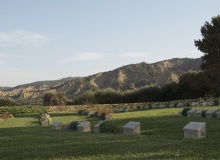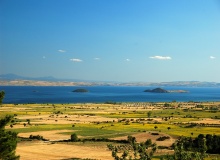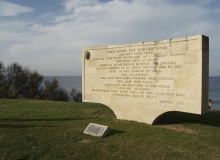Turkey
Istanbul | Cappadocia | Gallipoli
Travel to Turkey and discover this country exoticism to spare, with its covered bazaars, whirling dervishes, sultans' treasures and Byzantine mosaics. Turkey’s natural beauty is abundant, with great stretches of sandy beaches and romantic rocky coves. Travellers will find Turkish people to be exceptionally gracious hosts which makes sense given the country's place as a crossroads between Europe and Asia. Turkey has dramatically improved its tourist infrastructure, too.
This appealing mix does have a few drawbacks—increasing prices (though it's still an inexpensive place to travel); sprawling new development; and growing crowds—but they're hardly enough to spoil a visit. Our advice is to take your time in discovering Turkey. It's best experienced in leisurely excursions to places of remarkable history and beauty (such as Cappadocia and Ephesus) and in extended visits to fascinating and energetic cities (such as Istanbul).
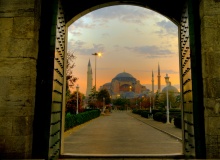
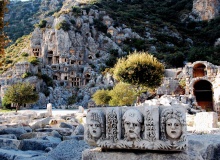
Istanbul
For the best part of two millennia, Istanbul has been one of the greatest cities in the world. A huge metropolis, Istanbul remains one of the most vibrant and magical places in Europe and the Middle East. It is not the capital of Turkey—that honour was bestowed on Ankara in the 1920s—but Istanbul is the country's largest city, its main commercial centre and at the heart of its tourism industry.
Istanbul's centuries of empire have left an extraordinary collection of palaces, churches, mosques and markets from every period of history. Its unique position as a city that straddles two continents, Europe and Asia, has given Istanbul an unmistakably cosmopolitan atmosphere. Alongside all the life and colour of the Middle East, Istanbul has a high standard of living with many of the accoutrements of a European capital, such as shopping malls and trendy international restaurants.
But Istanbul's charm is that despite its long history, it has not become a static museum-city like Venice. Istanbul is very much a lvital city, and although its traffic jams, air pollution and high-rise buildings lack the grace of its venerable landmarks, they're proof that Istanbul remains the hub of Turkey, a vital metropolis that's made up of more than ancient palaces and smoky bazaars.
WHEN TO TRAVEL to Istanbul
The best time to visit the city is between May- September time frame, and be sure you take a boat tour along the Bosphorus, zig zaging the cannel towards north, all the way to Anadolu Kavagi on the Black Sea.
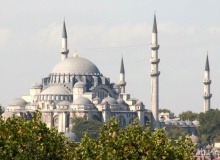

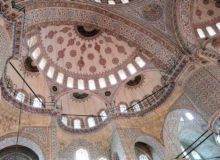
Cappadocia
This ancient Christian kingdom, in central Turkey, sits within a surrealistic landscape of pinnacles, ravines and carved-rock dwellings. It's one of the most fascinating places in Turkey. Caves in the region were used as shelters and still contain marvellous frescoes. Cappadocia encompasses the area bordered by the towns of Avanos on the north, Kayseri on the east, Nevsehir on the west and Nigde on the south.
About 22 km south of Nevsehir are the underground cities of Kaymakli and Derinkuyu. Spiralling downward for seven stories, these cities housed tens of thousands of people. Essential elements of the aboveground civilization, such as the ability to make wine, were retained by the ingenious underground inhabitants. The Goreme Valley, east of Nevsehir, has churches that were carved out of the rock and decorated with magnificent frescoes and they are still one of the major sights of Turkey.) The fascinating Zelve Valley, north of Goreme Valley, has a multilevel monastery and churches carved inside columns of rock (called tuff) that were formed by volcanic ash.
If you're travelling independently, we suggest staying in the centrally located town of Urgup or the villages of Goreme or Uchisar. Also nearby is the very scenic Ihlara Valley, which has yet more churches with frescoes.
WHEN TO TRAVEL to Cappadocia
Cappadocia is generally cooler than the popular coastal areas of the Mediterranean and the Aegean. April to mid June and September to October are the best months for avoiding the intense heat and crowds of summer.
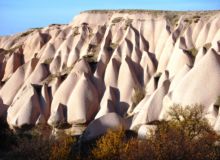
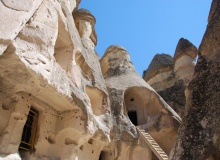

Gallipoli
Across the Dardanelles from Canakkale lies the Gallipoli Peninsula. Its historic significance cannot be overestimated. World War I would have been considerably shorter had the British Empire's troops succeeded in taking the heights of the peninsula. As it was, Turkish machine-gun nests kept the Allies pinned along the beaches, cutting them to shreds and effectively delaying any further Allied movement on the Eastern Front. The overwhelming majority of the Allied forces on the beaches at Gallipoli came from the Australia-New Zealand Army Corps (the ANZACs), and the place is a pilgrimage destination for visitors from Australia and New Zealand, especially on or around ANZAC Day, 25 April.
Most of the battlefield is now part of a national park, and the scenery of pine trees, green hills, ochre cliffs and sandy beaches is well worth a look. The most important sites are fairly spread out, so the best way to see the area is with a car or as part of a guided tour. Anyone can take a walk along the heights, look down on the beaches and understand why the Australians and New Zealanders below had hardly a prayer. Turkey's founder, Ataturk, first gained fame for his defence of Conkbayiri Hill in 1915.
He later erected a touching memorial to the forces he helped defeat.
WHEN TO TRAVEL to Gallipoli
The best time to visit this region is during the Anzac Day when many people from Australia and New Zealand come to Gallipoli to pay respect to those who died in the war.
